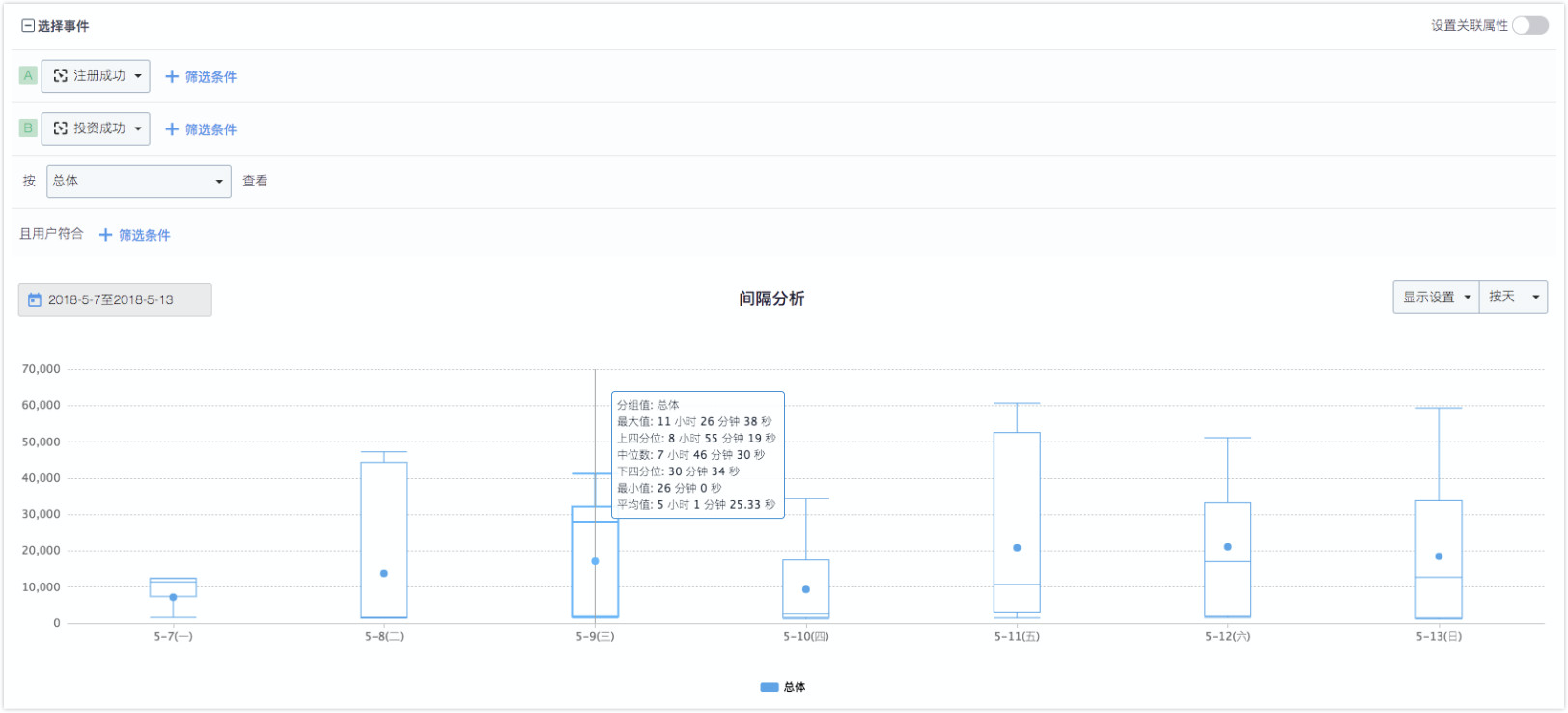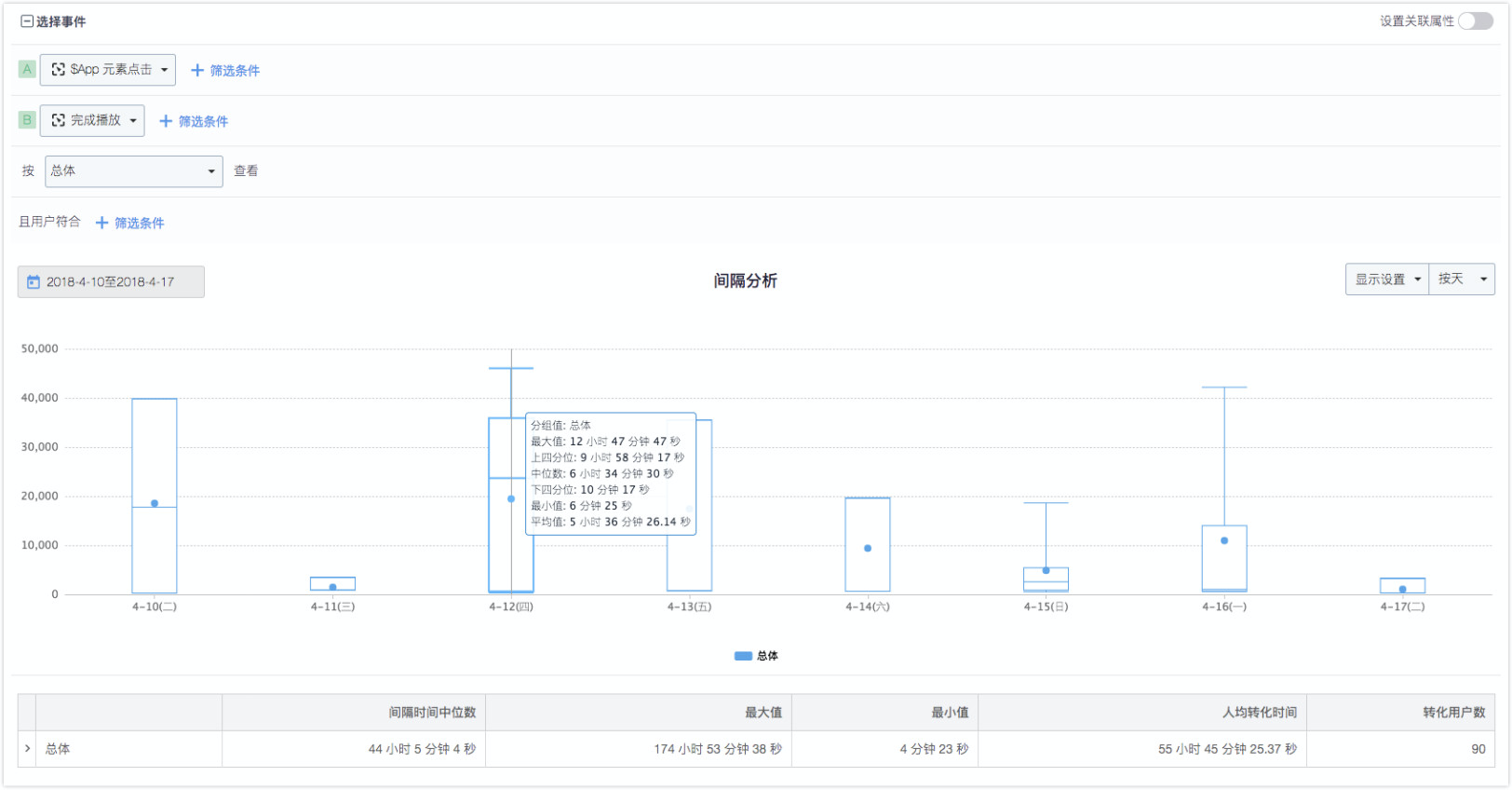Here, we use examples of two different industry products to illustrate the use cases of interval analysis.
1. Financial investment product application example
To incentivize new users to invest, financial investment products often distribute new user bonuses to "successful registration" new users, while also setting multiple bonus distribution strategies (such as different distribution dates and recipient groups).
Here, we aim to obtain the time interval and duration distribution between the "successful registration" and "successful investment" behaviors.
The specific steps are as follows:
- Step 1: Select "successful registration" and "successful investment" as the two target events for interval analysis, select the date range, and view the overall time interval and distribution.
- Step 2: Configure event attribute filtering conditions to analyze the impact of various strategies on conversion duration.
Refer to the following figure for details:

2. Short video product application example
Assuming we consider that a user who has fully watched a short video has experienced the core value of the product, we choose the duration of new users from "app launch" to "video completion" as the analysis object.
If users generally require a long time to complete the conversion, it indicates that users need to spend a high cost to filter videos, and they are likely to churn. Therefore, we select the time interval from "app launch" to "video completion" as the target for optimization.
Refer to the following figure for details:

Interval analysis is usually a reflection of business situations that help us explore potential problems, rather than being directly used as optimization metrics.
For example, if the median duration between submitting an order and paying for an order in a product's user base is too long, it indicates a potential problem that needs to be identified through event analysis, funnel analysis, and other functions.
 Popular Searches
Popular Searches

